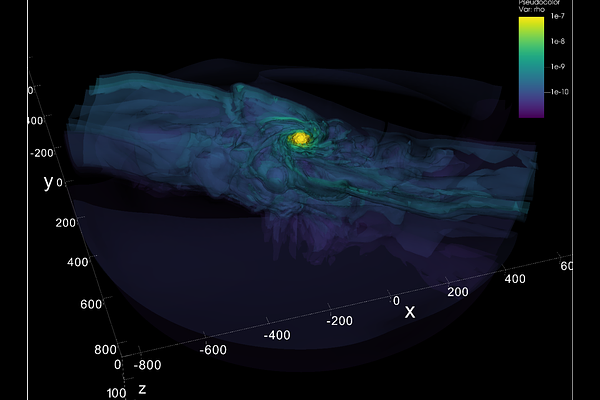Accretion of AGN Stars under Influence of Disk Geometry

Accretion of AGN Stars under Influence of Disk Geometry
Yi-Xian Chen, Yan-Fei Jiang, Jeremy Goodman
AbstractMassive stars can form within or be captured by AGN disks, influencing both the thermal structure and metallicity of the disk environment. In a previous work, we investigated isotropic accretion onto massive stars from a gas-rich, high-entropy background. Here, we consider a more realistic scenario by incorporating the stratified geometry of the background disk in our 3D radiation hydrodynamic simulatons. We find that accretion remains relatively isotropic when the disk is hot enough and the scale height is thicker than the accretion flow's nominal supersonic critical radius $R{crit}$ (sub-thermal). However, when the disk becomes cold, the accretion flow becomes significantly anisotropic (super-thermal). Escaping stellar and accretion luminosity can drive super-Eddington outflows in the polar region, while rapid accretion is sustained along the midplane. Eventually, the effective cross-section is constrained by the Hill radius and the disk scale height rather than the critical radius when the disk is cold enough. For our setup (stellar mass $\sim 50 M\odot$ and background density $\rho\sim 10^{-10}$ g/cm$^3$) the accretion rates is capped below $\sim 0.02M\odot$/year and the effective accretion parameter $\alpha\sim 10^{-1}$ over disk temperature range $3 - 7 \times 10^4$ K. Spiral arms facilitate inward mass flux by driving outward angular momentum transport. Gap-opening effects may further reduce the long-term accretion rate, albeit to confirm which requires global simulations evolved over much longer viscous timescales.